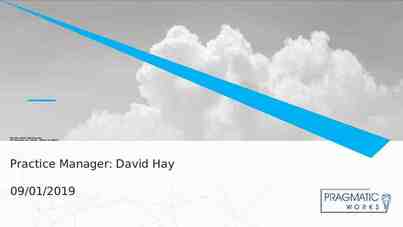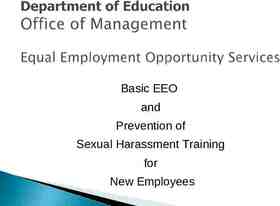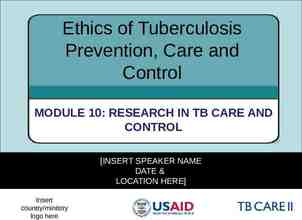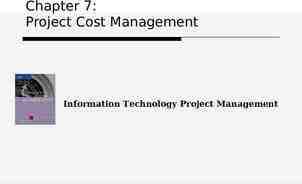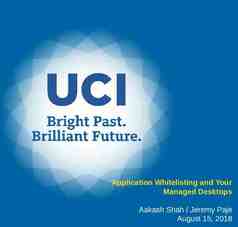+ Service Oriented Architecture (SOA) Enterprise Architecture
27 Slides4.86 MB

Service Oriented Architecture (SOA) Enterprise Architecture (EA) Enterprise Service Yale SolutionsBus Design(ESB) October 2012

Current Integration Challenges All issues, technical and non-technical need to be addressed in order to effect positive architecture change across the enterprise. Each team follows unique standards for technology selection, design, build, and deployment Connectivity is point to point and not reusable Projects are always time bound which forces teams to make decisions at the project level Improvements happen at the team or project level 2

Current Integration Challenges: 3 Fortunately there is a proven way forward! It will require a significant paradigm shift, however. Results Few assets/services are shared/reused (even within teams) Redundancies may exist (which yield disparate results) The Development teams operate within their respective domain and are therefore unable to collaborate on standards There is inconsistent behavior across teams in terms of solution delivery Clients miss opportunity to benefit from team collaboration Separate, discreet application construction and

Sample EDS System Connectivity 4 4

Definitions Page What is an Enterprise Service Bus (ESB)? A secure and robust middleware environment that enables systems to interoperate independently of technology An integration facilitator that allows internal and external systems to share information Implements SOA through Virtualization and management of service interactions What is Service Oriented Architecture (SOA)? An architecture strategy that drives a close alignment to the business by deconstructing IT systems into discreet services that perform business functions Services communicate via the ESB and may be reused Can drive architecture disintermediation via the composition of independent services into mashups or apps Examples: search, impersonation, login, person lookup, course lookup, etc. 5

Why do we need an ESB and SOA? 6 Systems no longer connect directly thereby allowing greater control and enforcement of the following principles: Standards Security Governance Reusability Consistency Data Integrity We can build and leverage a suite of business services that can be assembled into composite applications Multiple channels (Web, Portal, Cloud, etc. ) can be authenticated to access shared services Data synchronization managed through the ESB Publish/Subscribe queue

Additional Benefits and Opportunities Standardized, Streamlined, and Simplified Architecture Teams spend less time on complex and redundant architectures and now focus on business process, reuse, and quality ITS team focus, collaboration, and consistency SOA practices enable ITS to shift focus to becoming a ‘Change Ready’ and ‘Change Enabled’ organization Teams collaborate to build shared services vs. siloed applications Individual customizations replaced by standardized and governed practices Improved Customer Service Client benefits range from helping define business services and processes, to being able to consume shared services ITS’ ability to adapt to changing business needs enables positive and consistent business process improvement Clients move from being ‘customers’ to ‘partners’ 7

8 Cost/Relationship Savings Opportunities One time Service Reuse Maintenance reduced through consolidation and reduced redundancy of business functionality Pre-built services pulled ‘off the shelf’ to compose applications thereby reducing the time to build and deploy (same as COTS) Recurring Operational costs Improved System Quality Maintenance and support of services Deployed services are certified thereby reducing defect remediation Improved Data Quality Redundant data access minimized and replaced by standardized data services that can be reused by authorized personnel

Basic “Service Based” Architecture The initial SOA architecture includes the creation of reusable interface services that connect disparate systems. Enables initial system/data decoupling. Systems CIMS Teaching Fellows Med Apps Users Services Services (Global or Local) Transport Layer Enterprise Service Bus Services HR DW Banner 9

Future SOA Environment (Sample) New applications will take full advantage of composite applications via services. User interface is completely decoupled from the data source. Mobile Cloud Vendors Web Access Vendor Packages ESB Data Service DW Data Service Banner Data Service HR Data Service Standard access mechanism Alumni System of Record 10

Data Synchronization with Queues 11 Change events are published to a common transient queue where multiple applications can subscribe to the same topic App 1 App 2 App 3

The SOA Imperative: “Build-to-Change” versus “Build-to-Last” 12

SOA Services Strategy and Delivery SOA lifecycle management moves us from a linear thinking mode to a circular or evolutionary process. Start Evaluate, Enhance, Decommission Identify and Define Governance Governance Monitor Develop/ Modify Test/ Deploy 13

Community / ITS Relationship The alignment between the community and ITS can be improved and facilitated through a well-defined and governed Enterprise Architecture process Enterprise Architecture is a Critical Success Factor for the entire Yale community to achieve their expected results 14

Enterprise Architecture The ESB and SOA technologies are enablers: The end goal is managed Enterprise Architecture. Links ITS to the Yale Community by translating Yale’s vision and strategy into scalable and adaptable technology principles and models Manages current and future state technology vision Enables a ‘going in position’ when evaluating software, vendors, or new projects Manages risk and cost through standardization, reusability, and governance Consistently maintains a view at the enterprise level to ensure efficient utilization and orchestration of all resources 15

Enterprise Architecture Enterprise architecture principles drive a global perspective within an organization across business, data, application, and technology domains. 16

Starting with a Mission 17 The Mission should define the strategy and all activities should map back and fully support it Data Architecture Define, support, secure, and maintain the types, sources, and relationships of data necessary to enable the goals of the organization in a way that is complete, consistent, trusted, and understandable by all constituents. 17

Why Focus on Architecture? Business Strategy Enterprise Architecture 18 IT Strategy Enterprise Architecture provides the tight cohesion and loose coupling between IT and Business strategies It is the ‘glue’ that ties together Business and IT strategies and enables them to drive each other Enterprise Architecture can provide the technology innovation engine that enables ITS to better serve business partners

Responding to Business Change via Architecture Managing Change is Key Business Driver Change is Constant Benefits of SOA Respond Better, Faster, Cheaper to Change Customer Needs Align ITS with Business SaaS / PaaS Solutions Agility, Flexibility Vendor Solutions Reusability ITIL Improved Quality Legacy System Support Platform, Technology Integration across all Independence environments Reduced Redundancy 19

The SOA Imperative: “Build-to-Change” versus “Build-to-Last” 20

‘Change Ready’ Organization 21 Flexibility Speed Agility Adaptability Responsiveness Thoughtfulness Innovation Collaboration Rapid Evolution How do we accomplish this? Organizational alignment Tools Architecture Processes Mind-set Commitment .Leveraging our Strengths

Why focus on Change Readiness now? Strong need to integrate disparate environments to ensure consistency and data synchronization across all platforms. Key Building Blocks and Drivers are in-place or underway ITIL Relatively new organizational model Student Information Systems (YaleBluebook, Leep Frog, etc.) Cloud Vendor proliferation (SalesForce, ServiceNow, QB, etc.) Rethinking ERP environment DARCY / Blackbaud Identity and Access Management Initiative 22

What will this do for us? If we are successful, we will become Able to adjust to any newer technology or business trends more rapidly and calmly Able to integrate both internal and external systems and data in a consistent manner that models our standards Able to drive more effective and consistent technology decisions through a well thought out strategic architecture plan More effective at collaboration between teams and with our customers Better service providers to our customers 23

Current Services Status Domain System Subdomain Service name Course Get course information Description Parameters Student information Banner Student information Data elements returned Banner Course Search courses Returns the set of courses matching the criteria passed in TBD, but likely a combination of TBD, unknown whether this service should many fields such as term code, simply return business keys or all course owning school and/or department, information in one fell swoop subject code, course number, keyword, meeting day and/or time slot, whether or not the course has a final exam Student information Banner Course Get evaluation data on a particular course subject code, course number, possibly term/year Student information Banner Student Get current student information Returns the set of evaluation data for the specified course Returns the set of student information for the student(s) requested Student information Banner Student Get prior educational information Student information system Banner Student Search students Returns prior education data for the set of students requested Returns the set of students matching the criteria passed in 24 Development In test completed environment tbd 9/15/2012 Production Initial Date Consumers tbd Law, SOM tbd tbd tbd tbd At a minimum question and answer data, and tbd scores tbd tbd Law, SOM, Yale College, other prof schools? Term code, most likely PIDM but At a minimum should include: names, all ID's, 9/15/2012 possibly netid, Swid, Sid, or UPI email alias, preferred first name, ethnicity, as well degree(s), school(s), class year(s), major(s). TBD whether this should also include address information tbd tbd Law, SOM Student PIDM(s) TBD, but likely school name, degree and major tbd tbd tbd SOM TBD, but at a minimum: term code, school of affiliation * Law School may need to be able to query by year-of-study ** SoM may need to be able to query by "degree program"; we need clarity on this term TBD, unknown whether this service should simply return business keys or all student information in one fell swoop Partial (Major, tbd School, Cohort) on 9/15/2012 tbd Law, SOM Returns the Term code, subject code, course Short title, long title, long description, school set of course number and department of ownership, sectional information meeting times and instructor assignments for the course(s) passed in

Change Management for SOA & EA ITS needs to embrace five key aspects of change management as we move forward toward general adoption. 25

26 Thank you for your time!

27 Appendix

